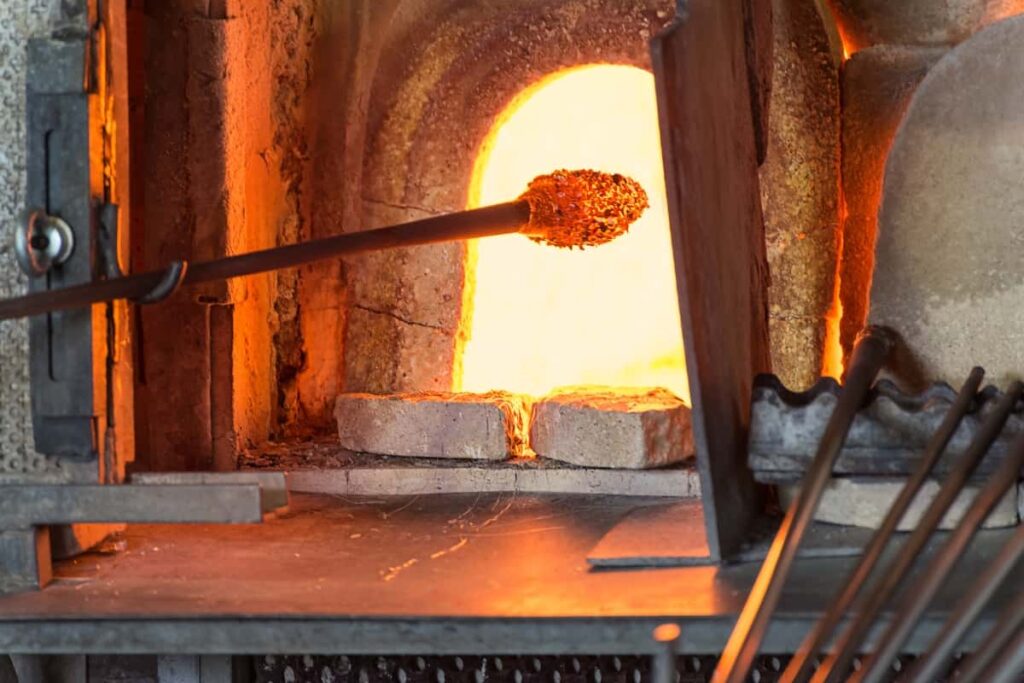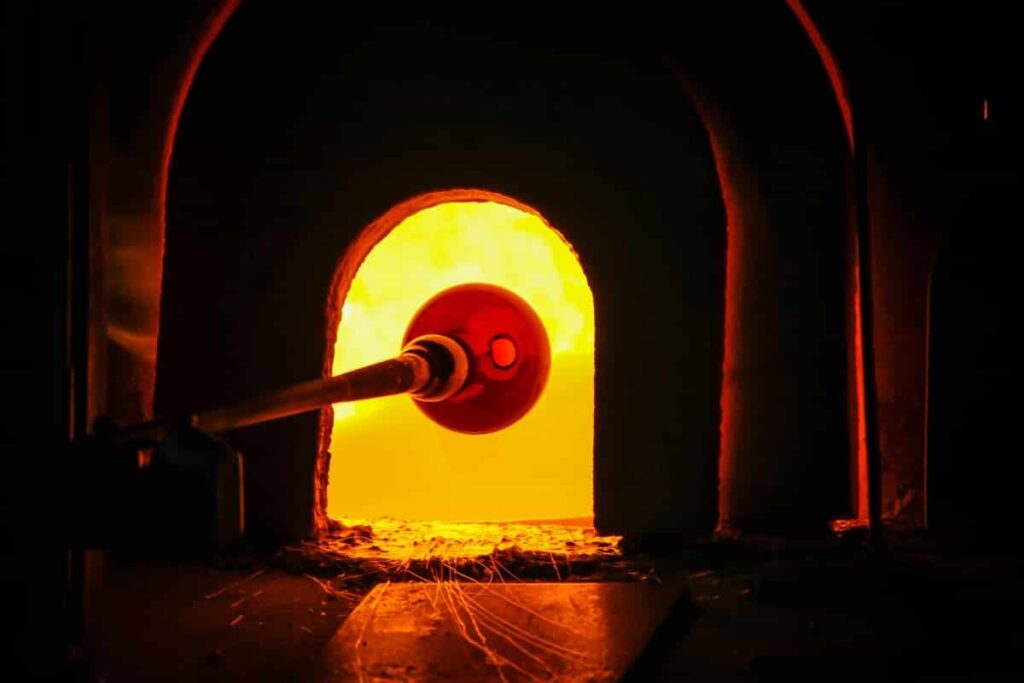
Are you fascinated by the art of glass making? A crucial aspect of this beautiful craft is the glass making oven. This comprehensive guide will delve into glass-making ovens, covering everything from understanding their functionality to operating them with precision. You’ll also discover essential techniques and maintenance tips and explore advanced features and innovations.
Additionally, we’ll help you choose the right glass-making oven to suit your artistic aspirations. Whether you have made glass before or not, The guide below will provide you with the knowledge to enhance your skills and create stunning glass artwork. Let’s dive in and unlock the potential of glass-making ovens together.
A glass making oven is a specialized equipment used in glass making. It provides a controlled environment for heating and shaping glass materials into various forms, such as sculptures, vases, and ornaments. Glass-making ovens utilize high temperatures to melt and manipulate glass, allowing artists to mold and shape it according to their creative vision.
These ovens are designed with specific features and functionalities to ensure precise temperature control and optimal working conditions for the glass-making process. Whether you’re a hobbyist or a professional glass artist, understanding the fundamentals of a glass-making oven is essential for creating exquisite glass artwork.
When it comes to glass making, selecting the right oven is crucial for achieving outstanding results. With various available options, it can be overwhelming to determine which oven suits your requirements best. This comprehensive guide simplifies the process, providing valuable insights to make an informed decision. Read on to learn about 8 critical factors when choosing a glass making oven.
One of the most important aspects is its temperature control capabilities. Look for an oven with precise temperature adjustments to ensure optimal glass melting and shaping. Temperature consistency and stability are vital for producing high-quality glass products.
Consider the heating method used by the oven. Two standard options are electric and gas heating. Electric ovens offer precise temperature control and are generally more energy-efficient, while gas ovens provide faster heat-up times. Choose the heating method that aligns with your production requirements and preferences.
Evaluate the size and capacity of the oven based on your production volume. Determine the maximum size of glass pieces you intend to create and ensure that the oven’s interior dimensions can accommodate them comfortably.
Efficient energy usage is essential for minimizing operational costs and environmental impact. Look for an oven with excellent insulation and energy-saving features. High-quality insulation retains heat effectively, reducing energy consumption and ensuring consistent performance.
Proper ventilation is crucial to remove fumes and maintain a safe working environment. Choose an oven with a well-designed ventilation system that effectively captures and eliminates harmful gases and smoke generated during glass making processes.
Check for user-friendly control systems that allow you to efficiently program and monitor temperature settings, timers, and other relevant parameters. Intuitive controls streamline your glass making operations and enhance overall efficiency.
Invest in a reliable and durable oven that can withstand the demands of continuous glass production. Examine the manufacturer’s standing and customer testimonials to ensure you choose a trusted brand known for producing high-quality, long-lasting equipment.
Prioritize safety by selecting an oven with good safety features. Look for features such as temperature alarms, emergency shut-off systems, and heat-resistant handles. These precautions help protect you and your team from accidents and ensure a secure working environment.
Operating a glass making oven is a critical skill for anyone involved in the glass-making process. Whether you are an artist, a glass manufacturer, or a hobbyist, understanding how to operate the oven safely and efficiently is essential. We will demonstrate the process of operating a glass making oven, ensuring you can confidently produce high-quality glass products.


Regular maintenance and care of your glass making oven are crucial for maintaining its performance and extending its lifespan. Implementing effective maintenance practices can prevent issues, ensure consistent heat distribution, and avoid costly repairs. This guide’ll provide valuable tips to help you properly maintain and care for your glass making oven.

Glass making ovens have evolved significantly, incorporating advanced features and innovative technologies to enhance the glass-making process. These advancements have revolutionized the artistry and efficiency of working with glass.
One notable innovation is the integration of digital controls, allowing artists to precisely monitor and adjust temperature settings, ensuring optimal conditions for different glass types and techniques. This level of control enables artists to achieve consistent results and experiment with a wide range of creative possibilities.
Another significant advancement is the development of programmable firing schedules. Artists can now pre-set temperature profiles, ramp rates, and hold times, automating complex firing sequences. This feature saves time and effort and enables artists to execute intricate glass-making techniques with precision and repeatability.
Modern glass making ovens also often incorporate improved insulation materials and energy-efficient designs. This helps maintain stable temperatures, reduces heat loss, and minimizes energy consumption, making them more environmentally friendly and cost-effective.
Furthermore, some glass making ovens now have advanced ventilation systems to remove fumes and maintain a clean working environment. This ensures the safety and well-being of artists by minimizing exposure to potentially harmful gases during the glass-making process.
Read More